When to use what chatbot: Halloween edition

We’ve come a long way since November 2022 when ChatGPT initially launched. We now have AI chatbots (something users interact with) in addition to generative AI tools (tools that integrate with a website or search). Although AI chatbots were first treated as novelties, AI chatbots are now a part of our reality. They’ve moved from just being used in messaging apps and as customer service; AI chatbots are now helping people brainstorm ideas; learn about new topics; write emails, code, essays, and stories; and are even used for entertainment.
But what are the differences between the two most popular AI chatbots, ChatGPT and Bard? And when should you turn to one of these chatbots instead of just a simple Google search? The answers of course vary, but let’s talk through some of the major differences.
Where do ChatGPT and Bard get their information?
Before answering when to use which AI chatbot, it’s important to consider how they provide their responses. Both chatbots use natural language processing, which means both produce AI-generated answers that mimic human responses to users’ prompts. Both ChatGPT and Bard were initially trained on a variety of sources like Wikipedia, books, and conversations on the internet. But that’s where the two AI chatbots start to differ.
ChatGPT was trained on data sources up to September 2021, which means its data set is limited to evergreen information or cultural events that happened prior to September 2021. OpenAI has since announced that ChatGPT will use Bing to respond to user prompts, meaning that the limitation of the September 2021 knowledge cut-off date will no longer be an issue. However, this update is only available for ChatGPT’s “plus” and “enterprise” plans with an unknown rollout for the free version of the chatbot.
On the other hand, Bard uses Google and Google tools like Google Trends to provide responses to prompts. This means that Google’s Bard is currently a more up-to-date chatbot with real-time answers to cultural questions. ChatGPT’s update could challenge Bard’s supremacy in this arena, but that is yet to be seen.
When should marketers use which AI chatbot?
Use Bard when interested in current responses or responses with variations colored by current events.
Because Bard draws from Google and its associated tools like Google Trends, prompts elicit updated responses. Let’s use “best Halloween costumes” as an example. This prompt isn’t intrinsically topical — there’s no date in there that indicates the response needs to be best costumes for 2023. However, Bard infers the prompt means “best Halloween costumes for 2023” and provides costume ideas grouped by “pop culture,” “scary,” and “funny.” These groups include a few ideas, each with a picture that links to its source and a small blurb about the costume idea.
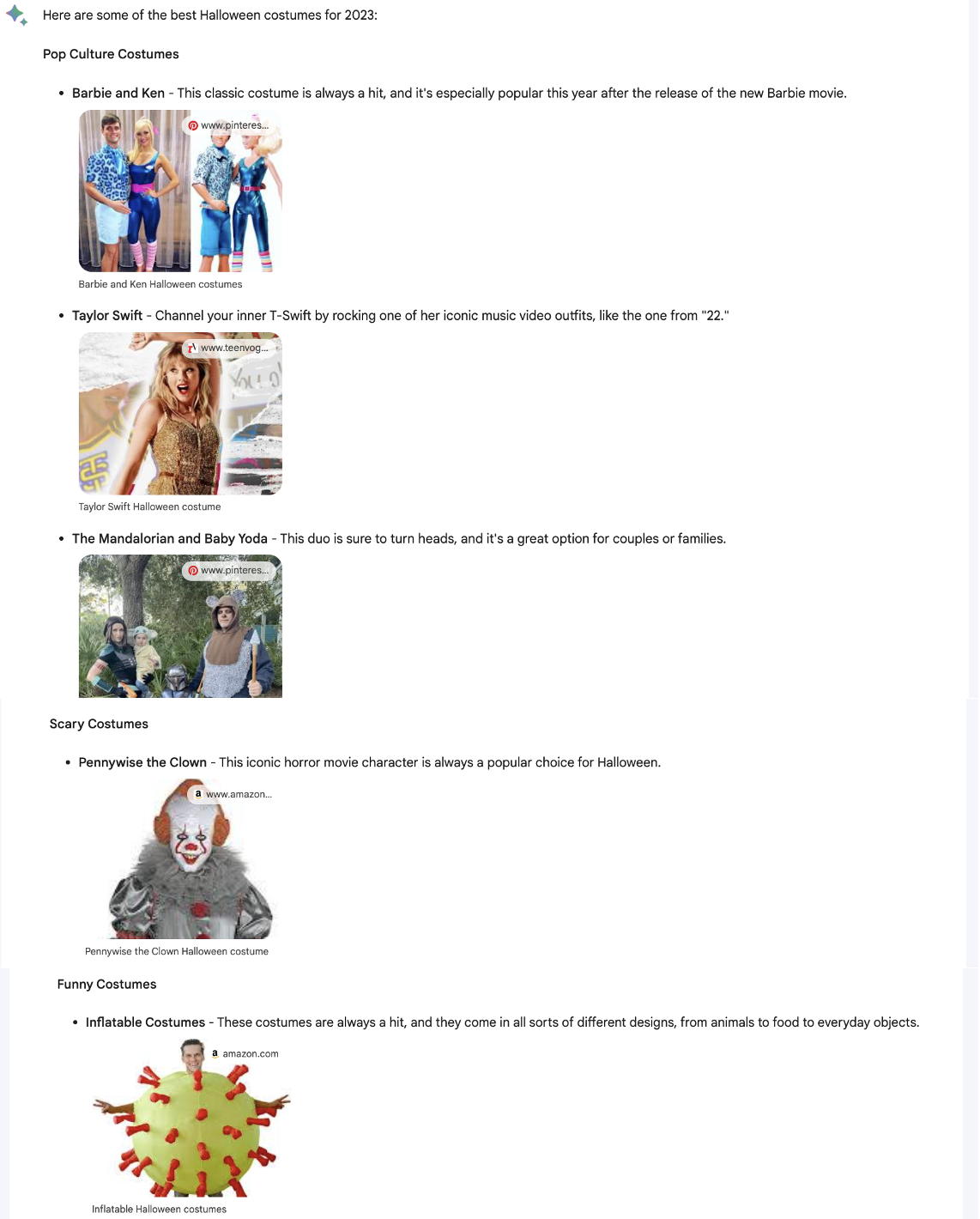
Taking this prompt one step further and asking how to make a DIY witch costume, Bard provides a bullet list of materials and barebone instructions. But Bard also provides a few twists on the classic witch costume, clearly colored by recent related search trends (ahem dark academia ahem).
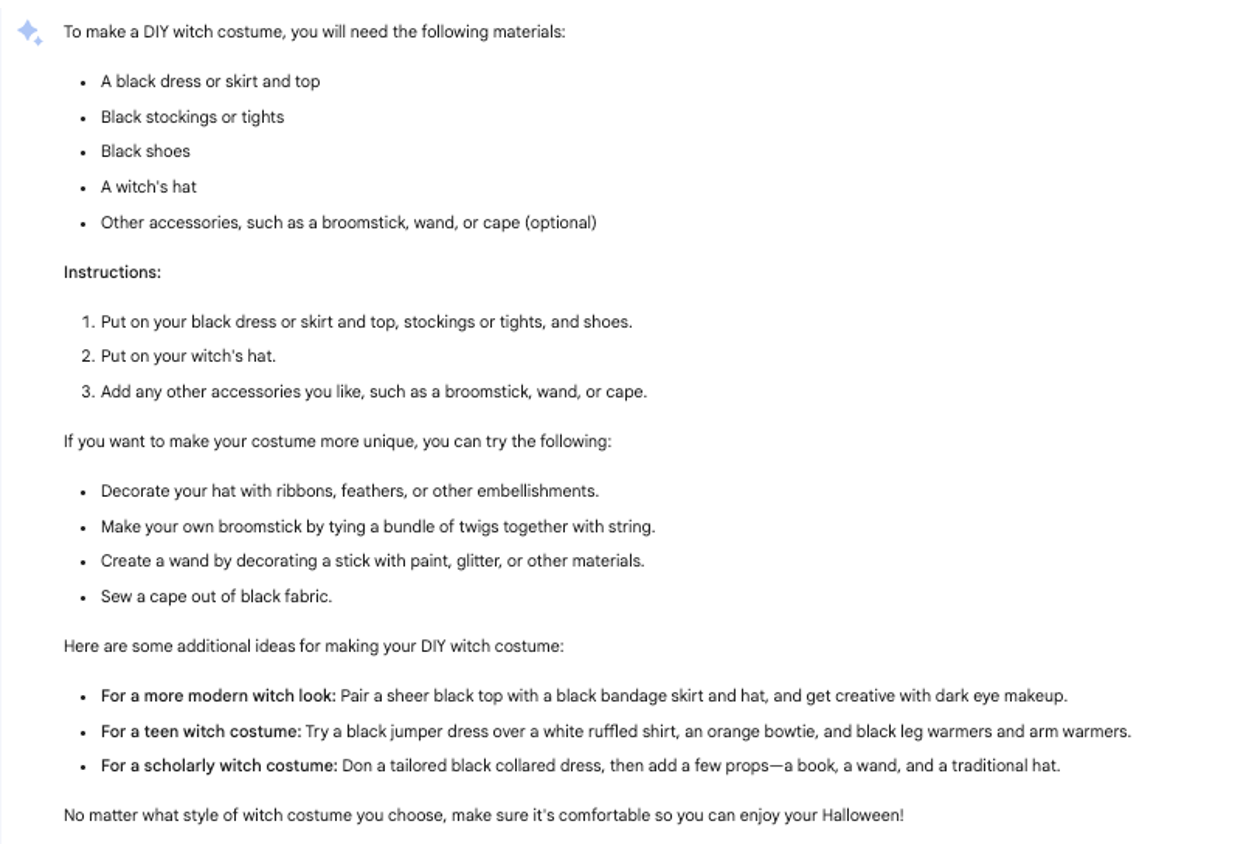
Use ChatGPT when interested in more human-like responses.
The current free ChatGPT still operates with a knowledge cut-off date from September 2021, which means the response to our “best Halloween costume” prompt takes on more of an evergreen flavor. ChatGPT provides a list of the top 10 most popular Halloween costumes of all time, along with a brief idea of how to create each costume. There are no images or sources attached, so it’s harder to vet these responses.
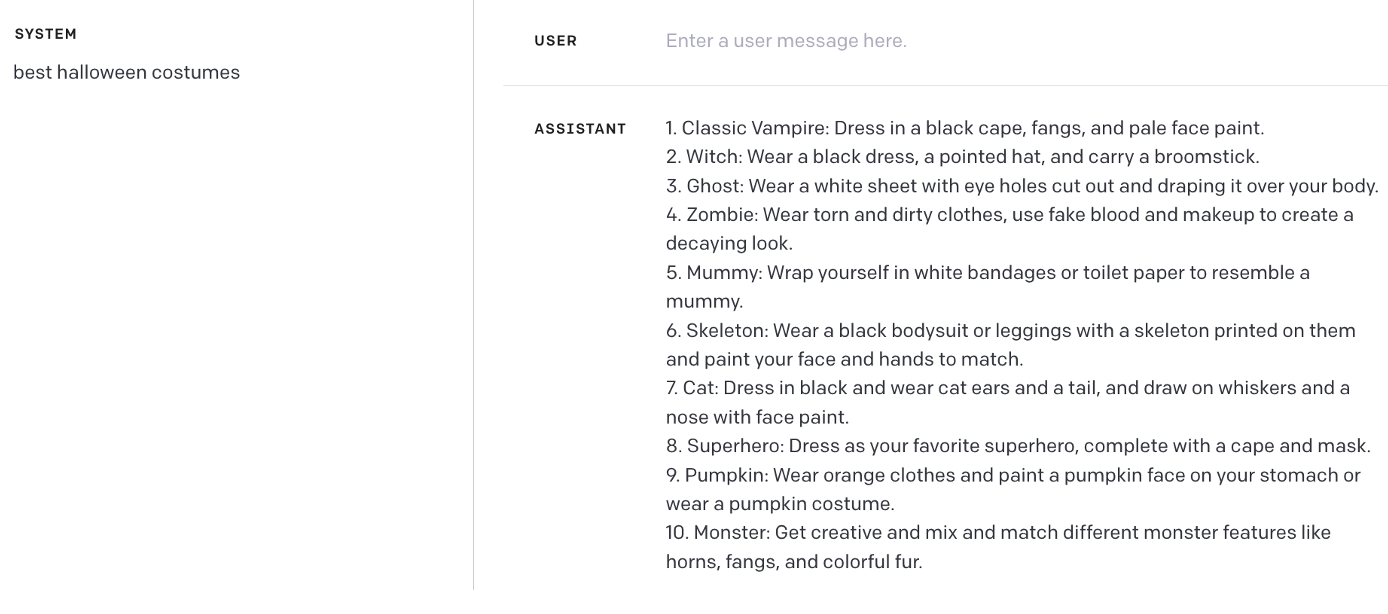
Repeating the secondary prompt, “how to make a DIY witch costume,” ChatGPT doesn’t include any suggested witch variations like Bard, but the more in-depth steps illustrate ChatGPT’s writing skills. Phrases like “add layers or tattered fabrics for a more worn and mystical look” really sell the human voice, far more than Bard’s simplistic “put on your back dress or skirt and top, stockings or tights, and shoes.”
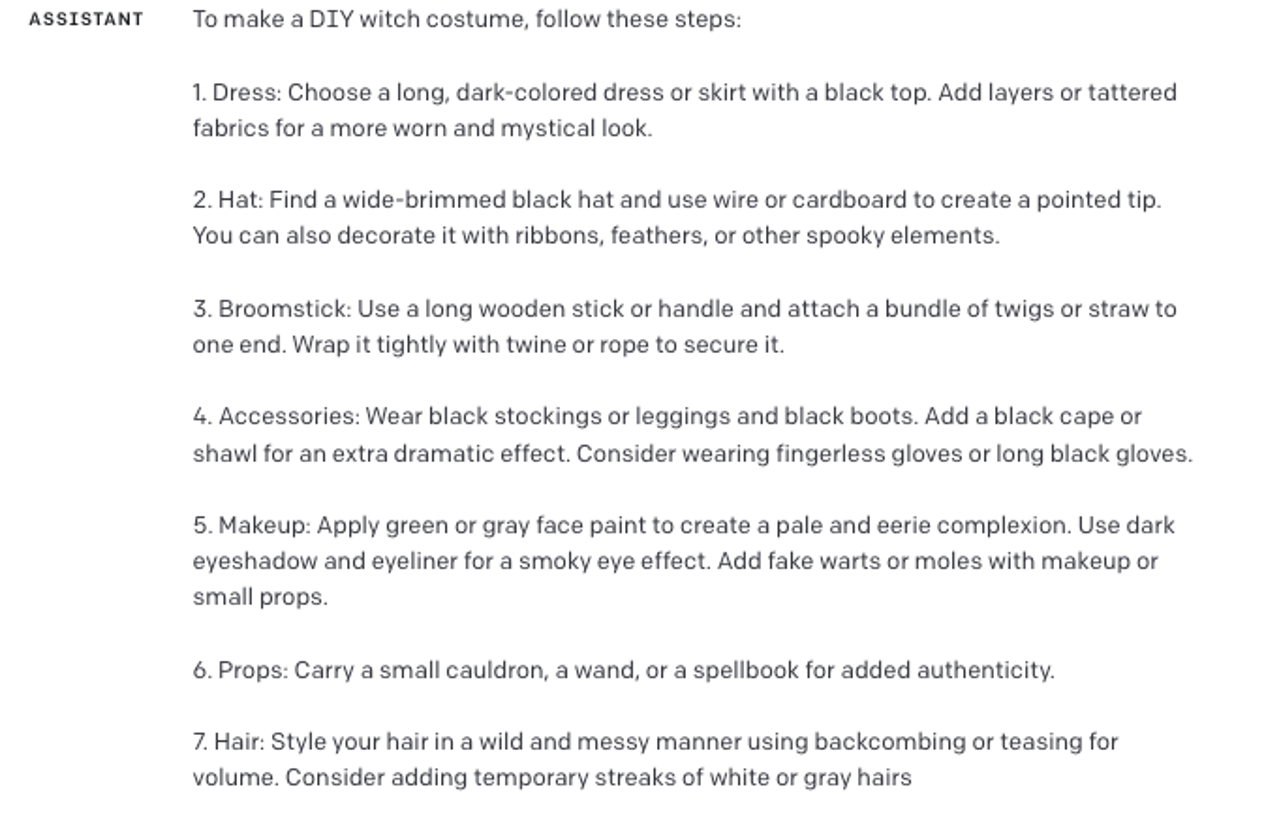
Use Google when interested in an actual product or wanting to dive deeper into your prompt.
Interestingly, Google’s interpretation of “best Halloween costumes” more closely mirrors ChatGPT than Bard. The search results for the query produce lists of top all-time Halloween costumes rather than best costumes for 2023. The big differences marketers will find when going to Google rather than an AI chatbot are the inclusion of ads, allowing searchers to immediately view and visit products, and the actual search result listings themselves, allowing searchers to click into each source and do deeper research right out of the gate. Of course, the search results don’t produce pat responses like the chatbots, so if marketers are looking for a quick answer or fast thought starters rather than deeper research, chatbots are the way to go.
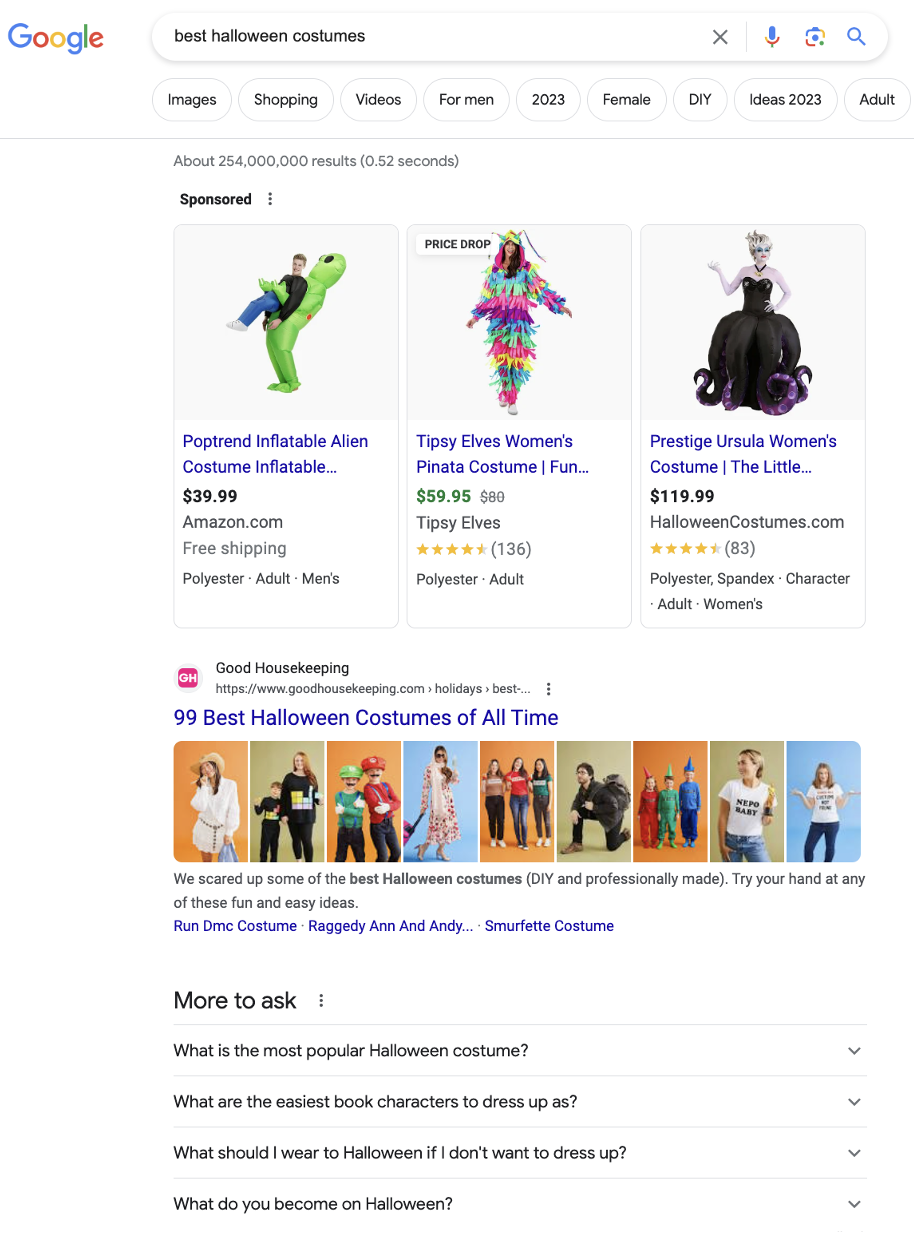
What should marketers know?
There is no “right” answer when it comes to choosing an AI chatbot or traditional search engine to help with your research or brainstorming. All options can be helpful. Both chatbots can produce inaccurate responses, can plagiarize, and can produce biased responses. On the other hand, both can provide helpful thought starters, create efficiencies, or help you learn about a new topic.
Instead, consider why you’re considering an AI chatbot. If you’re looking for writing inspiration or to have a conversation with a chatbot just for fun, ChatGPT is your best bet. However, if you’re looking for more real-time responses or are using AI to help with research, Bard’s plug into Google will be more helpful. But if you know that you need real research, that sources are important for your research, or if you’re looking to purchase, skip the bots and head straight to your favorite search engine. One final word of warning: as with all new technologies, using these chatbots thoughtfully and with appropriate human oversight is crucial to ensure your final product is accurate and best represents you or your brand.



